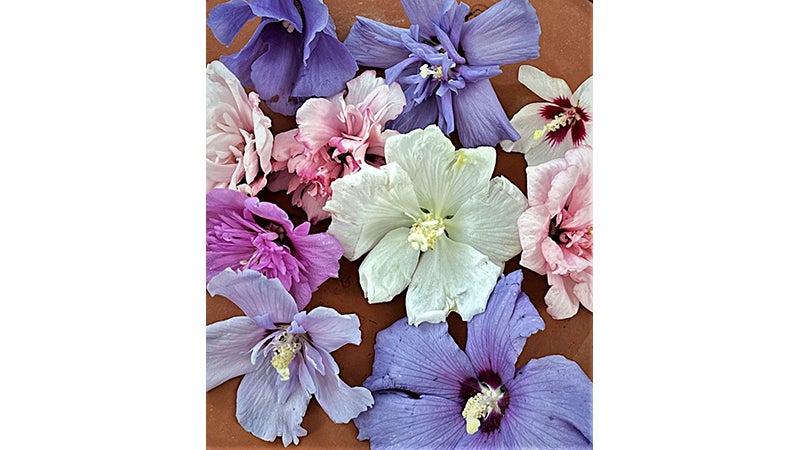The Rose of Sharon is back!
Published 2:00 pm Sunday, July 25, 2021

- Photo courtesy of Sonny Vaughn
|
Getting your Trinity Audio player ready...
|
At last, one of my favorite heirloom shrubs is finding its rightful place in the sun, just in the nick of time.
I rarely feature individual plants in my columns, mostly because my savvy garden expert friend Gary Bachman, MSU Extension Service’s popular Extension home garden horticulturist, covers exciting plants superbly in his weekly Southern Gardener newpaper columns, radio and TV spots, and live forums (subscribe to them free online at MSUCARES.com).
But one in particular, an old, old garden favorite from Texas and Florida to Canada, has come to the forefront as a pretty darn good alternative to our beloved crape myrtles, which are suffering from a horrible new insect plague.
Crape myrtle bark scale, a tiny white critter that covers entire trees with sticky excrement and a black coating of mold, is spreading uncontrollably across the South. Experts agree that only a soil drenching with a powerful systemic insecticide can help, applied every year or two.
Anyway, in the scramble to find suitable alternatives, in addition to blue-spired “lilac chaste tree” (Vitex), I have landed most solidly on exciting new kinds of the ancient tall shrub called both althea and rose of Sharon.
This true hibiscus easily handles temperatures from triple digits to well below zero. It can live for decades in full sun to medium shade, tolerates soils that stay wet in the winter or dry in the summer, and has decent yellow fall colors.
Its large, showy pollinator-friendly flowers can be single, double, or extra frilly, and range from white, red, purple, mauve, violet, or blue, to bicolors with different colored throats. A couple of Bachman’s favs are Purple Pillar, a tall, three-foot wide one, and the rounded, chest-high pink flowering Pollypetite. Two of my own choices are Red Heart, pure white with a rich red center eye, and Bluebird, a dependable blue-flowered cultivar.
To those who say altheas are too weedy from seed, in the 1980s USDA hybridizers developed some that are sterile or nearly seedless which helps them bloom more for much longer. Many have “goddess” names: Aphrodite, Minerva, Helene, and Diana.
Sonny Vaughn, an avid gardener from Flora in central Mississippi (home to the oldest continuous plant swap in the known universe), grows and shares cuttings from over a dozen different kinds, learning in the process which ones really perform in our climate with little care.
Two of his favorites are the non-stop red bloomer named Lucy, Azzuri which produces really big blue flowers. By the way, every year I’m starting to identify more with one of Sonny’s Facebook quotes: “Don’t kneel in the garden without a plan to get up.”
He sent me a photo of some of his a couple of weeks ago, and told me how easily they root from pencil-sized or smaller cuttings taken this time of year. He strips off most of the leaves and sticks the cuttings in jars with a couple inches of water. His form white knobby growths in a couple of weeks, and enough roots to put them into potting soil in a month. They get well-rooted enough for planting outside by fall.
Sonny says he’s rooting enough altheas this summer to start a new display in the historic Greenwood Cemetery just north of our state Capitol in Jackson, where they will complement the old roses and provide cuttings to all who visit them in the summer.
If you can’t find altheas in your neighborhood, plan on visiting Sonny’s and others in the cemetery next summer, and please take cuttings for yourself.
Pass the word: Rose of Sharon is back, in a big way.
Felder Rushing is a Mississippi author, columnist, and host of the “Gestalt Gardener” on MPB Think Radio. Email gardening questions to rushingfelder@yahoo.com.





